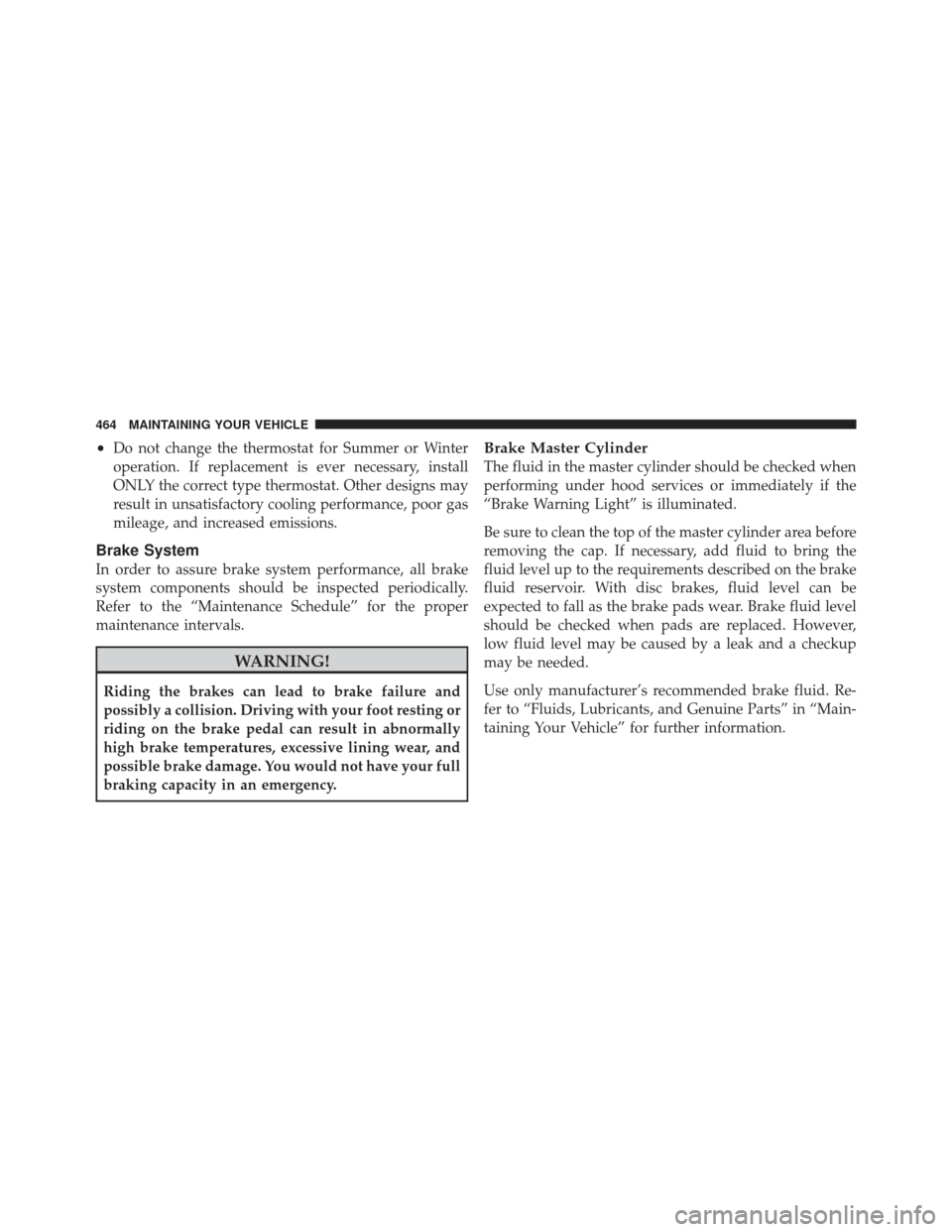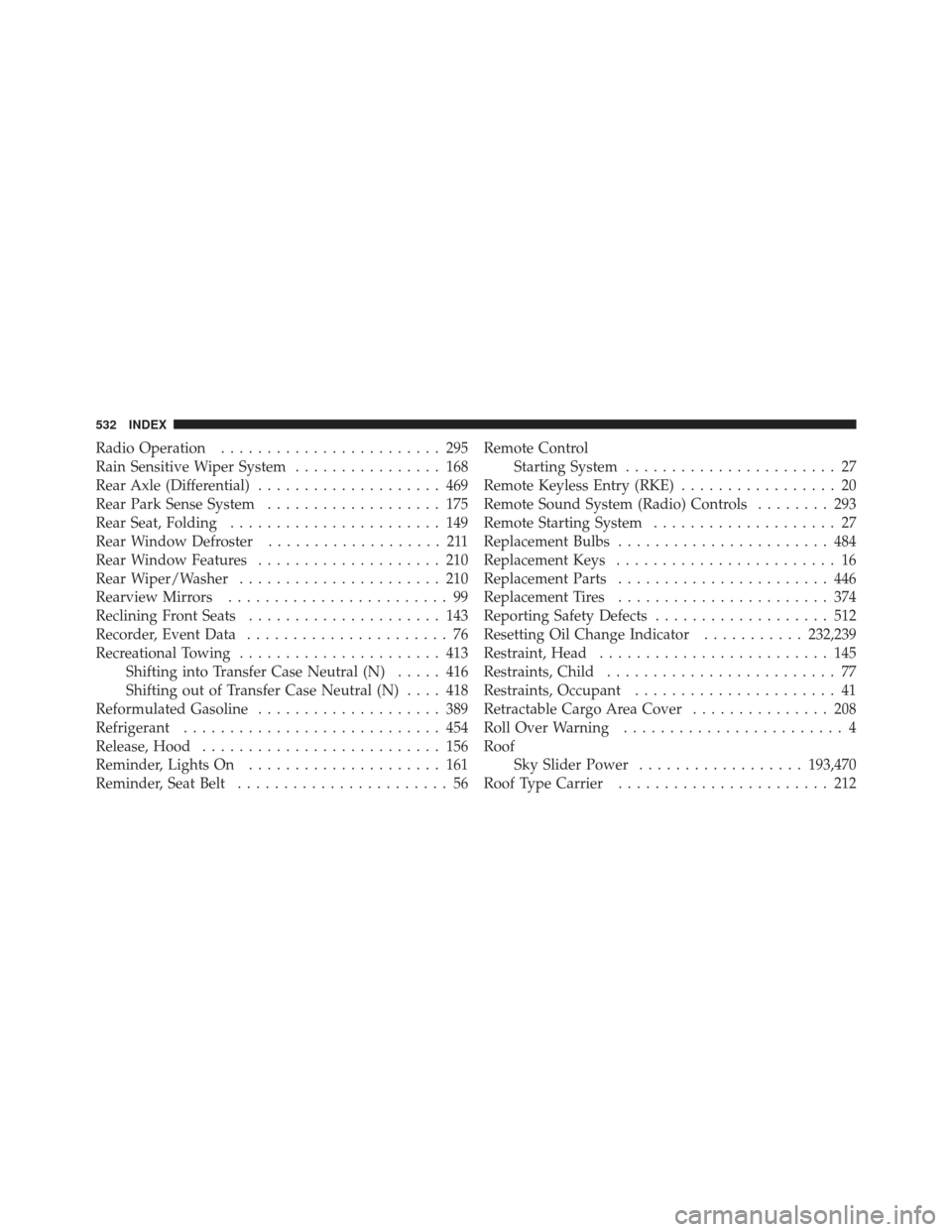Page 72 of 542

Driver And Passenger Advanced Front Air Bag
Inflator Units
TheDriver And Passenger Advanced Front Air Bag
Inflator Units are located in the center of the steering
wheel and on the right side of the instrument panel.
When the ORC detects a collision requiring the Ad-
vanced Front Air Bags, it signals the inflator units. A large
quantity of non-toxic gas is generated to inflate the
Advanced Front Air Bags. Different air bag inflation rates
are possible based on collision severity and type. The
steering wheel hub trim cover and the upper right side of
the instrument panel separate and fold out of the way as
the air bags inflate to their full size. The air bags fully
inflate in about 50 to 70 milliseconds. This is about half of
the time it takes to blink your eyes. The air bags then
quickly deflate while helping to restrain the driver and
front passenger. The Advanced Front Air Bag gas is vented through the
vent holes in the sides of the air bag. In this way, the air
bags do not interfere with your control of the vehicle.
Along with seat belts and pretensioners, Advanced Front
Air Bags work with the knee bolsters to provide im-
proved protection for the driver and front passenger. Side
air bags also work with seat belts to improve occupant
protection.
Supplemental Side Air Bag Inflatable Curtains
(SABIC)
The
Supplemental Side Air Bag Inflatable Curtains
(SABIC) may deploy during rollovers and collisions
where the impact is confined to a particular area of the
side of the vehicle, depending on the severity and type of
collision. In these events, the ORC will deploy the SABIC
only on the impact side of the vehicle. Because air bag
sensors estimate deceleration over time, vehicle speed
70 THINGS TO KNOW BEFORE STARTING YOUR VEHICLE
Page 466 of 542

•Do not change the thermostat for Summer or Winter
operation. If replacement is ever necessary, install
ONLY the correct type thermostat. Other designs may
result in unsatisfactory cooling performance, poor gas
mileage, and increased emissions.
Brake System
In order to assure brake system performance, all brake
system components should be inspected periodically.
Refer to the “Maintenance Schedule” for the proper
maintenance intervals.
WARNING!
Riding the brakes can lead to brake failure and
possibly a collision. Driving with your foot resting or
riding on the brake pedal can result in abnormally
high brake temperatures, excessive lining wear, and
possible brake damage. You would not have your full
braking capacity in an emergency.
Brake Master Cylinder
The fluid in the master cylinder should be checked when
performing under hood services or immediately if the
“Brake Warning Light” is illuminated.
Be sure to clean the top of the master cylinder area before
removing the cap. If necessary, add fluid to bring the
fluid level up to the requirements described on the brake
fluid reservoir. With disc brakes, fluid level can be
expected to fall as the brake pads wear. Brake fluid level
should be checked when pads are replaced. However,
low fluid level may be caused by a leak and a checkup
may be needed.
Use only manufacturer’s recommended brake fluid. Re-
fer to “Fluids, Lubricants, and Genuine Parts” in “Main-
taining Your Vehicle” for further information.
464 MAINTAINING YOUR VEHICLE
Page 534 of 542

Radio Operation........................ 295
Rain Sensitive Wiper System ................ 168
Rear Axle (Differential) .................... 469
Rear Park Sense System ................... 175
Rear Seat, Folding ....................... 149
Rear Window Defroster ................... 211
Rear Window Features .................... 210
Rear Wiper/Washer ...................... 210
Rearview Mirrors ........................ 99
Reclining Front Seats ..................... 143
Recorder, Event Data ...................... 76
Recreational Towing ...................... 413
Shifting into Transfer Case Neutral (N) ..... 416
Shifting out of Transfer Case Neutral (N) .... 418
Reformulated Gasoline .................... 389
Refrigerant ............................ 454
Release, Hood .......................... 156
Reminder, Lights On ..................... 161
Reminder, Seat Belt ....................... 56 Remote Control
Starting System ....................... 27
Remote Keyless Entry (RKE) ................. 20
Remote Sound System (Radio) Controls ........ 293
Remote Starting System .................... 27
Replacement Bulbs ....................... 484
Replacement Keys ........................ 16
Replacement Parts ....................... 446
Replacement Tires ....................... 374
Reporting Safety Defects ................... 512
Resetting Oil Change Indicator ...........232,239
Restraint, Head ......................... 145
Restraints, Child ......................... 77
Restraints, Occupant ...................... 41
Retractable Cargo Area Cover ............... 208
Roll Over Warning ........................ 4
Roof Sky Slider Power .................. 193,470
Roof Type Carrier ....................... 212
532 INDEX